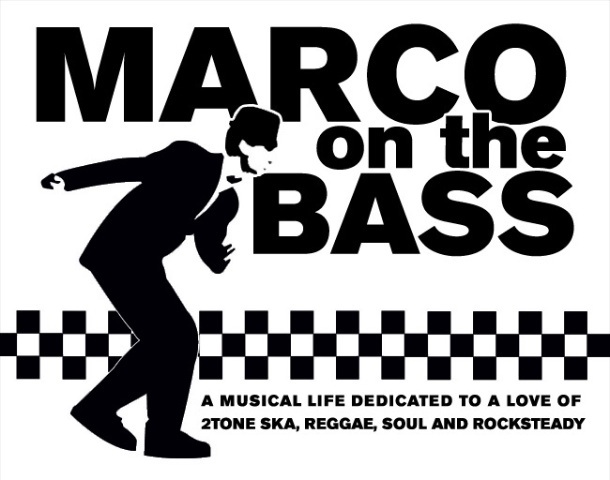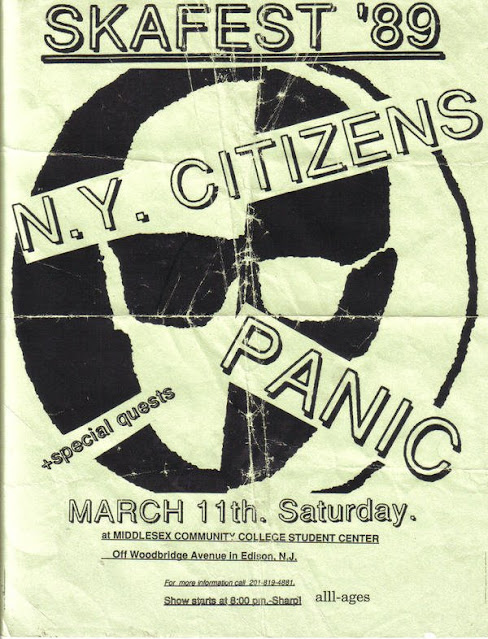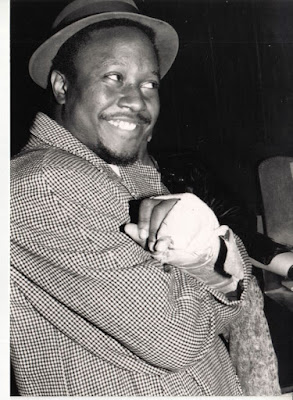Truth be told, I could write a whole book just about my experiences at City Gardens -- an iconic punk rock club located in Trenton, NJ -- between 1988 and 1992. City Gardens may be one of the greatest music venues of the 80's and 90's on par with both CBGBs in New York and the 930 Club in Washington, DC. The number of top-tier alternative 80s and 90s bands that played there is astounding including The Ramones, Nirvana, Sonic Youth, Green Day, Bad Brains and Gwar.
From an historical perspective, A Flock of Seagulls, Thompson Twins and Sinéad O'Connor all made their American debuts at City Gardens. Danzig performed their first show ever at the venue. City Gardens also hosted a performance by comedian Henny Youngman and counter-culture personality Timothy Leary. Jon Stewart, famed for his work with MTV and Comedy Central's The Daily Show, was a bartender at City Gardens from 1984-1987, before his stand-up comedy career and later television career took off. James Murphy, leader of LCD Soundsystem, was an underage bouncer for City Gardens during hardcore Sunday matinee shows in the 1980s. But the best thing about City Gardens was the diversity and variety of bands that Randy "Now" Ellis the club's promoter at the club booked. As he told me:
That was the thing about City Gardens: one night it was Jimmy Cliff, the next night it was the Circle Jerks, the next night it was Iggy Pop.
Even more astonishing was that Randy LOVED ska music! In fact, he loved ska music so much that he hosted what may have been the first all ska radio show in the U.S. -- One Step Beyond -- on local Trenton radio station WTSR-FM. Given those credentials, Randy was always on the look out for ska bands to book at the club. He regularly booked The Toasters and Bim Skala Bim at City Gardens and both bands drew well and helped to popularize ska in New Jersey. Randy shared his thoughts with me when I interviewed him for my book Ska Boom about both bands. Of The Toasters he said:
Everybody danced. Everybody sweated, everyone danced. They were a good band. They were tight. And it was also unique because they had the horns too. I can't think of many bands really back then that had a couple horn players with them. So all of a sudden we go from a guitar based drum front man, punk rock, Ramones-ish to a seven, eight, nine piece band with horns and keyboards and people dancing and singers, like, running around on stage. It was just a different thing and the kids loved it and danced their asses off to it.
Of Bim Skala Bim he said:
You know, they were totally different than The Toasters. I probably can't give you the words but it was a whole different style. Maybe it was more rock, but they featured Vinnie on the trombone and he was full of energy and power. I just remember him running around with a trombone. Which probably was done in the '40s and '50s on trombone, but in rock it wasn't seen yet.. And they had Jackie and Dan up front who were great. A lot like The Selecter.
But Randy also loved all things New Jersey and when he found out about us just up the road from Trenton in New Brunswick, it was a match made in ska and reggae heaven! I don't remember the details of how we ended up being booked for the first time, but we made our debut at City Gardens on Friday March 3, 1989 -- wedged between dates for Jane's Addiction and Paul Stanley of KISS -- opening for reggae legend Sister Carol (if you squint you can see our name in the Punk Card above). At the time, Sister Carol was on a roll. She was coming off a role in Jonathan Demme's 1986 indie movie "Something Wild" starring Melanie Griffith and Jeff Daniels and had established herself as a leading reggae DJ.
There was a decent sized, if small crowd at the club for the Sister Carol show, but we brought our high energy ska sound and Roger's dancing and stage jumps converted just about everyone who was there that night. We made such an impression and sold so many t-shirts, that as Randy was paying us our agreed upon $50 for our 30 minute set, he asked if we were free to open for Bim Skala Bim two months later. We immediately agreed and that was the beginning of a very important and fruitful relationship with Randy.
That show with Bim Skala Bim was important because they were nice to us and also gave us some important advice about our stage show and songs. They became a band that we soon used as inspiration for how to be a band and how to interact with fans. Also on the bill that night was a great ska punk band from New Haven, CT called 6 Feet Under. They remain one of the best and most overlooked ska bands of the late 80s era that I ever saw.
Randy was the first real promoter we had worked with and he was very clear with us about certain rules for bands at City Gardens that helped us to become a professional band. Rule number one: show up on time for load in. Rule number two: don't touch or move any of the gear for the headliner on stage and finally, never go over your allotted set time. The biggest sin for a support band was to go over your set time. In retrospect, they were really very simple rules, but it was pretty amazing to us how many bands just couldn't follow them. To our credit, we never broke any of those rules and because we listened and followed them religiously, Randy booked us regularly. But the fact is Randy just liked us. He later told me:
I definitely always loved "Ska In My Pocket", of course, and "Chaos: and "I Can't Remember My Name." But, "Ska In My Pocket" had hit written all over it. Why didn't that become the next "Gangsters" by the Specials, or even the "Israelites"? You were just as good as The Citizens and Toasters, you know? I mean how about Roger with all that energy?
Once Randy had taken us under his wing that spring of 1989 and crowds were coming out to see us -- and wearing our t-shirts to all sorts of City Gardens shows -- he booked us as openers for The Toasters and N.Y. Citizens that summer. But it was opening for reggae legend Yellowman that September when things started to click. There was a sizable crowd at the show (a mix of punks, dreads, mods, rockers, hippies and skinheads) and we took full advantage of the opportunity to bring our 2-Tone inspired mix of ska, reggae, punk and calypso to the audience who warmed to us as our set. We definitely worked up a head of steam as we went along and this footage includes the last 3 songs we played that night including 'Telling Time', 'Chaos' and 'I'm Not Waiting' which all featured on our first self-titled album that we would record in early 1990.













.jpeg)







